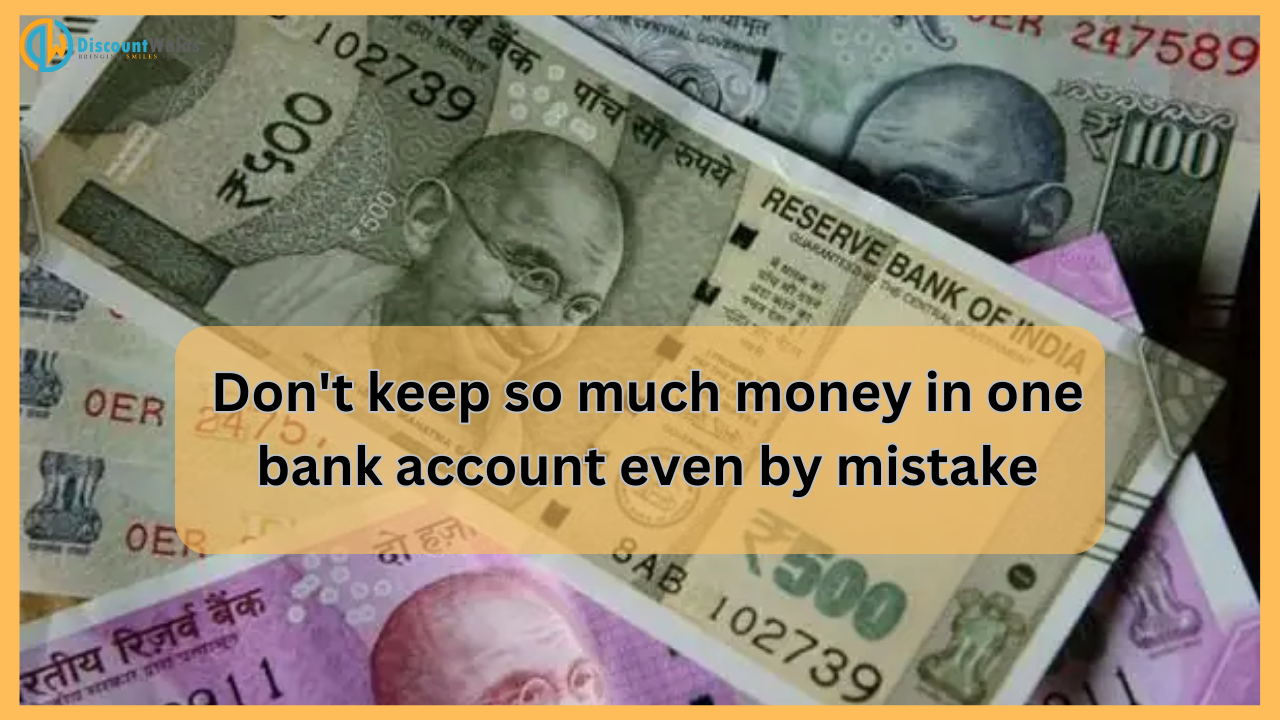
Savings Account Rules: Many people often have these questions in their mind that is your entire amount safe in the bank? If the bank sinks or goes bankrupt, will every penny of the customer’s money be returned? In such a situation, let us tell you today in our news that if a customer has deposited more than this amount in any one bank, then if the bank goes bankrupt, the rest of the deposits except Rs 5 lakh will be lost.
Deposit Insurance Coverage: To keep their hard-earned money safe, people deposit money in the bank. But is your entire money safe in the bank? If the bank sinks or goes bankrupt, will every penny of the customer’s money be returned? The answer is no. If a bank goes bankrupt then only the deposits of customers in that bank are secured up to Rs 5 lakh. Earlier this limit was up to Rs 1 lakh. But in Budget 2020 it was increased to Rs 5 lakh. If a customer has deposited more than this amount in any one bank, then if the bank goes bankrupt, the rest of the deposits except Rs 5 lakh will be lost.
DICGC provides insurance coverage on bank deposits up to Rs 5 lakh-
Bank deposits up to Rs 5 lakh are covered by Deposit Insurance and Credit Guarantee Corporation (DICGC) Deposit Insurance. DICGC is a wholly owned subsidiary of the Reserve Bank of India. All commercial and co-operative banks are insured by DICGC. Under this insurance, depositors get guaranteed protection on bank deposits up to Rs 5 lakh. DICGC’s coverage covers all small and big commercial banks and cooperative banks, whether they have branches in India or abroad.
DICGC furnishes banks with printed leaflets, registering them as insured banks. This provides information that this bank is insured by DICGC. You can inquire from the branch officer whether your bank comes under the insurance coverage of DICGC or not.
If there are multiple accounts in the same bank-
The new limit of insurance coverage on deposits of up to Rs 5 lakh is for all the deposits of a customer in one bank including savings account, FD, RD etc. This means that if a customer has deposited money in different accounts in the same or different branches of a bank, then only an amount of up to Rs 5 lakh in all of them together is guaranteed to be safe. Both principal and interest are included in this amount.
What types of deposits are covered-
- All types of deposits in the bank like savings, fixed, current, recurring or other.
- deposited by foreign government
- inter bank deposit
- Central/State Government Deposit
- Deposit of State Land Development Bank
- Any deposit exempted from the approval of the Reserve Bank
- Any deposit outside India
If the account is joint-
The limit of Rs 5 lakh for coverage is the sum total of all single account deposits like savings account, FD, RD etc. of a customer in all branches of the same bank. But if someone has both single and joint account in the same bank, then the amount up to Rs 5 lakh in both will be secured. The reason for this is that according to the Reserve Bank, single and joint accounts are considered separate units.
If it is a case of minor’s account-
If a minor i.e. a child below 18 years of age has an account in any bank and it is being operated by an adult as his legal guardian, then the minor account will be considered as a separate account. In such a situation, a separate deposit of up to Rs 5 lakh will be safe. But if there is more than one account in the name of the same minor in the same bank, then the limit of Rs 5 lakh will be applicable to all the accounts combined.
Now the stuck money will be paid to the customers within 90 days-
Finance Minister Nirmala Sitharaman had proposed amendments to the DICGC Act in Budget 2021 and the Union Cabinet had approved amendments to the DICGC Act in July 2021. In October 2021, the Deposit Insurance and Credit Guarantee Corporation (Amendment) Bill, 2021 was also passed by the Parliament.
This law has come into effect from September 1, 2021. After the amendment, now in case any bank sinks or is in trouble, the process of getting the amount of up to Rs 5 lakh to the depositors will be completed within 90 days.
Its scope will also include customers of those banks on which RBI has imposed any restriction or moratorium. Earlier, this process used to take 2 to 3 years to complete, due to which the deposits of the customers of the distressed bank used to get stuck for a long time.